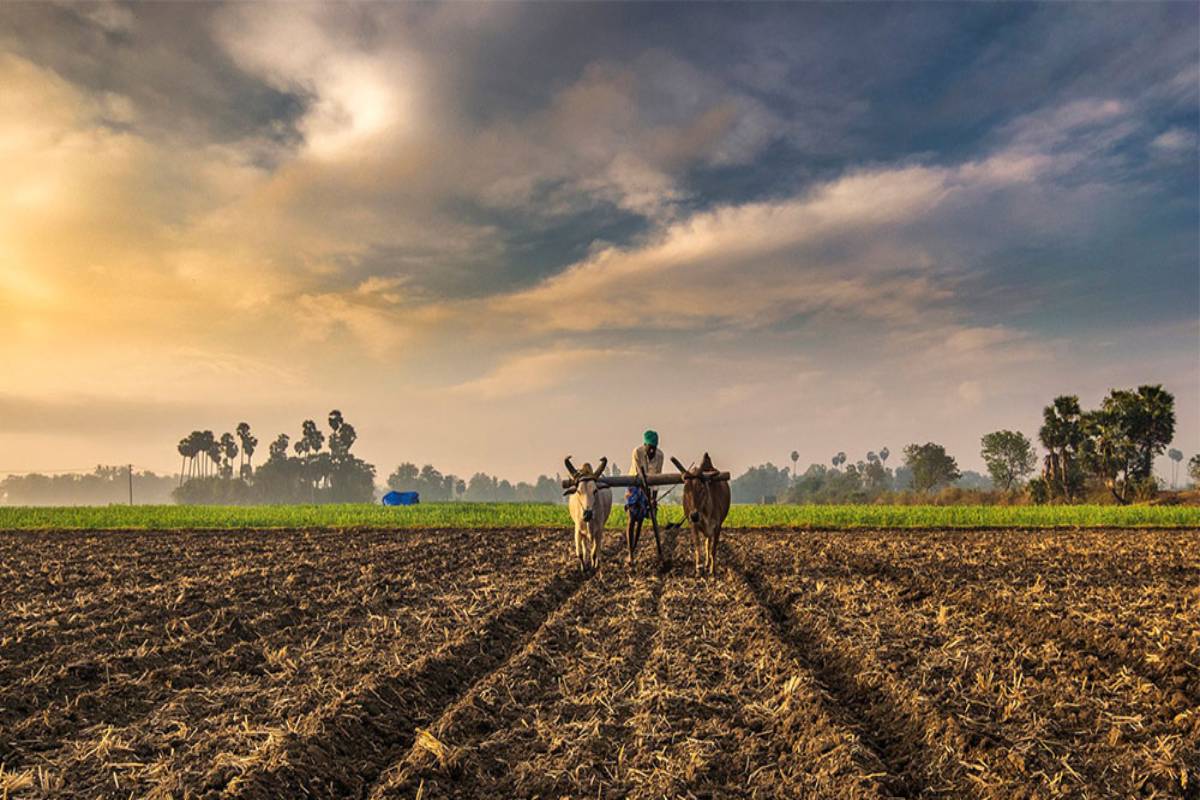Announcements almost every other day compel us to believe that India is now the fifth largest economy in the world; that India will be a $5 trillion economy very soon; that India will be the third largest economy of the world in 2027, and that India will become a developed nation in 2047. When the national economy grows at an exponential rate, as envisaged by the government, it is quite expected that the citizens will live better; their income will grow handsomely.
But it is a matter of concern that farmers’ income in India has not increased over the years, either substantially or at a rate commensurate with the growth of the Indian economy. Farmers do not earn an income required for decent living with nutritious food, their children’s good education and proper medical care. The targeted average monthly income of farmers in 2022-23 was Rs 22,615 or Rs 271,378 annually at current prices at the national level. This target was set by the Committee on Doubling Farmers Income (DFI) set up by the Government in April 2016. The Government announced the target of doubling farmers’ income over a six-year period from 2016-17 to 2022-23.
Advertisement
Against this the monthly average income of a farm household was merely Rs 10,218 nationally in the 2018-19 crop year as per estimates released in 2021 by the 77th round of Situation Assessment Survey of Agricultural Households of NSSO. This income does not cover monthly consumption expenditure of the households. Share of agriculture in GDP declined from 55.1 per cent in 1950 to 13.9 per cent in 2013-14. Share of the manufacturing sector in GDP has remained stagnant at around 16 per cent over the last decade. So there was less scope for shifting of the labour force from agriculture to manufacturing.
This results in crowding in farms which implies that the scope of income from agriculture has dwindled. Generally with the progress of an economy, the manufacturing sector flourishes and the labour force migrates to this sector, mostly from agriculture. But Indian economic growth is now mostly service sector driven. Analysis has shown that agricultural family incomes depend on the size of land holding. Those having large land holdings enjoy large income. The DFI committee showed average monthly income of an agricultural family in 2015- 16 at current prices was Rs 6,648 in case of marginal and small farmers (land holding less than 2 ha); Rs 16,756 for medium and semi-medium farmers (land holding between 2 ha and 10 ha) and Rs 50,449 in case of large farmers (land holding more than 10 ha).
The All India average was Rs 8058. The income includes non-farm income like cattle, dairies, fisheries which form about 24 per cent of the income of marginal and small farmers. State wise regional imbalances of income and land distribution are also observed. So differential strategies need to be adopted depending upon land size distribution and regional aspects. The Indian agriculture sector is dominated by marginal and small land holdings. The proportion of marginal and small holdings taken together increased considerably from 74.5 per cent in 1980-81 to 85 per cent in 2010-11 with an addition of about 51 million holdings over three decades. The average size of an operational land holding dwindled from 1.84 hectare in 1980-81 to 1.16 hectare in 2010-11.
The number of agriculture workers, i.e. cultivators and agriculture labourers, has increased from 185.3 million in 1991 to 234.1 million in 2001 and then to 263.1 million in 2011. This indicates increasing pressure on agriculture resulting in reduction in income and productivity of individual land holders, particularly marginal and small land holders. The DFI Committee has observed that states having higher per capita agricultural income have a low rate of poverty implying an inverse relation between agricultural income and poverty. The Committee also observed that ‘Many developed and developing economies have progressively shifted from a production based support policy to an income support policy, which is considered more equitable and perhaps easier to implement than the price based policy due to large sizes of landholdings.’
The committee further opined that earlier emphasis was given on an increase in production. It is a fact that production of food grain was targeted at 420 million tonnes by 2015, up from 210 million tonnes ten years earlier. But now the focus has been shifted to increase of income. A production approach, it is stated, does not accord importance to value realisation from post production activities. However the food grain production reached 330 million tons in 2022-23 in comparison to 257.10 million tonnes in 2012-13. India achieved selfsufficiency in food grain production.
Fixation of target production and achieving them is also necessary to feed the population. Resilient farmers produced as much food grain as was required by their countrymen. There is progress in the agriculture sector. A farmer in India has to play the roles of a cultivator, an investor, and planner and also of a market operator. An individual cannot perform all these functions with equal efficiency, particularly in today’s complex economic environment. They are entrepreneurs as well as labourers. They must face several risks head on. Risks include erratic behaviour of climate, availability of adequate irrigation, and good quality seeds, pesticides and fertilizers at affordable prices. Managing or mitigating numerous risks single-handedly is a daunting task and also involves finance.
Finance here means loans. Farmers don’t earn an income that can support savings and investment. One estimate shows that Indian farmers’ loan is about 60 per cent of their income. According to the National Sample Survey data in 2018- 19, average debt of a farm household was Rs 74,100 whereas annual income was Rs 123,000. According to one estimate 50 per cent of farm households in India are in debt. An indebted farmer cannot invest money to improve upon the quality of his or her cultivable land. Farmers alone cannot control or influence markets. They are the price takers. Farmers therefore are now laying emphasis on minimum support price (MSP) to recover their costs and earn some income in view of volatile market conditions. But unfortunately that support price have not been increased reasonably over the last few years. This has worsened the plight of the farmers. The DFI Committee feels that rise is MSP will have an inflationary effect.
The Indian economy has produced a good number of billionaires in recent years. The number has crossed the 200 mark and there were 93 additions during 2023. Their origin of wealth varies from business and manufacturing like steel, power, software, infrastructure, retail, investment, telecom, real estate, media, and ironically from education too. But perhaps none is from agriculture. How the current Indian economic system can help a farmer become a billionaire needs to be delved into. It is a paradox that though land is an asset and its value appreciates over time, land held for cultivation does not yield good rewards. Risks here surpass rewards. However, promoting land may give lucrative profits. Farmers will still have to jostle for their daily livelihood every day.
Agriculture was and will remain for the foreseeable future the backbone of the Indian economy. Efforts to double farmers’ income have not yielded positive results. The Government had to give direct cash benefit transfer as income support under PM Kisan Samman Nidhi Yojana to eligible farmers from February 2019 at Rs 6,000 per year. Total amount disbursed till February 2024 under this scheme is Rs 3 lakh crore to more than 11 crore farmers. Fresh and pragmatic policies, as well as plans and strategies meant exclusively for the marginalised farmers need to be implemented. Institutional efforts should be made to bail out these farmers from their poor economic condition. Modern technology is the driving force of the present day economy. The fruits of economic growth must reach the distressed farmers.
(The writer is a Cost Accountant who worked with a public sector power utility.)











